Discover the remarkable world of the Learjet 31, a business jet that revolutionized corporate aviation with its perfect blend of speed, luxury, and performance. Whether you’re an aviation enthusiast or considering private jet options, this comprehensive guide will explore what makes this aircraft a standout choice in its class.
The Learjet 31, developed by Bombardier Aerospace, represents a pinnacle in corporate and private aviation excellence. Since its late 1980s debut, this aircraft has earned its reputation as the go-to choice for discerning clients who prioritize both efficiency and comfort in their air travel.
Building upon the success of the Learjet 29, the Model 31 combines advanced technology with proven design elements, making it equally proficient in both short and long-range flights. Its consistent performance and reliability have established it as a benchmark in the business jet market.
History and Development
Introduced in October 1990, the Learjet 31 emerged from an innovative engineering process that began in the mid-1980s. Bombardier’s ingenious approach combined the following key elements:
- Integration of the Learjet 55’s Longhorn wing
- Incorporation of the classic Learjet 35A fuselage
- Implementation of advanced aerodynamic properties
- Enhancement of overall performance efficiency
Production and Variants
| Production Period | Total Units | Key Variants |
|---|---|---|
| 1988-2003 | 262 | Original Model 31, 31A, 31AER |
The initial production focused on the ‘straight’ 31 models, featuring analog avionics and alcohol-based windshield de-icing systems. The evolution continued with the Learjet 31A in 1994, introducing digital avionics, and culminated with the Learjet 31AER (Advanced Extended Range) in 2002.
Specifications of Learjet 31
Powered by twin Garrett TFE731-2 turbofan engines, each delivering 3,500 lbf (15.6 kN) of thrust, the Learjet 31 exemplifies advanced engineering in business aviation. These powerful engines ensure exceptional performance while maintaining safety and reliability.
Dimensions and Capacity
- Length – 48 feet 8 inches (14.83 meters)
- Wingspan – 43 feet 10 inches (13.36 meters)
- Height – 12 feet 3 inches (3.73 meters)
- Wing area – 264.5 square feet (24.57 m²)
- Passenger capacity – Up to 8 passengers with 2 crew members
Engine and Powerplant
The twin Garrett TFE731-2 turbofan engines provide the perfect balance of power and efficiency. Key specifications include:
- Thrust per engine – 3,500 lbf (15.6 kN)
- Empty weight – 9,857 pounds (4,471 kg)
- Maximum takeoff weight – 15,500 pounds (7,031 kg)
- Low noise levels for noise-sensitive areas
- Exceptional climb rates and high-altitude performance
Performance Capabilities
The Learjet 31’s performance capabilities set new standards in business aviation, powered by its twin Honeywell TFE731-2 turbofan engines. This aircraft delivers exceptional speed and efficiency for demanding corporate travel needs.
Speed and Range
| Performance Metric | Capability |
|---|---|
| Maximum Speed | Mach 0.81 (534 mph/859 km/h) |
| Standard Range | 1,450 miles (2,330 km) |
| Extended Range (31A) | 1,911 nautical miles (3,539 km) |
Altitude and Stability
The Learjet 31 demonstrates exceptional high-altitude capabilities, cruising comfortably at 51,000 feet. This impressive service ceiling positions the aircraft well above typical weather patterns and commercial traffic, delivering two significant advantages:
- Enhanced ride smoothness due to less atmospheric turbulence
- Improved fuel efficiency from operating in thinner air
- Reduced interference with commercial air traffic
- Better weather avoidance capabilities
- Optimal flight path flexibility
The aircraft’s remarkable stability at high altitudes comes from its innovative design features, particularly the delta fins – small triangular surfaces on the aft fuselage that enhance yaw stability during high-speed, high-altitude operations. Combined with advanced flight control systems, these design elements ensure precise handling and steady performance even in challenging atmospheric conditions.
Features and Design
The Learjet 31 exemplifies Bombardier’s commitment to aviation excellence through its sophisticated design and advanced features. The aircraft’s unique engineering combines proven components from successful Learjet models, creating a superior business jet that excels in both performance and luxury.
| Design Element | Source Model | Benefit |
|---|---|---|
| Fuselage | Model 35/36 series | Proven reliability and optimal space utilization |
| Wing design | Model 28/29 | Enhanced aerodynamics and handling |
| Delta fins | New addition | Improved yaw stability at high speeds |
Avionics and Cockpit
The Learjet 31’s cockpit showcases state-of-the-art avionics technology, with early models featuring Collins avionics and the Bendix King RDS-81 radar system. The 1994 introduction of the Learjet 31A brought significant technological advances, including:
- Advanced Electronic Flight Information System (EFIS)
- Multi-function digital displays
- Enhanced situational awareness tools
- Sophisticated J.E.T FC-530 flight control system
- Improved pilot interface and reduced workload
Utility and Comfort
The Learjet 31 masterfully balances utility with passenger comfort, featuring a unique ski locker for sports equipment storage. The cabin interior, despite its compact dimensions of 4.35 feet in height and 4.95 feet in width, offers:
- Seating capacity for 6-8 passengers
- Large, adjustable leather seats with recline and swivel functions
- Convenient foldaway tables for work or dining
- Strategic lighting placement
- Efficient space utilization for maximum comfort
Market and Usage
Since its introduction, the Learjet 31 has established itself as a cornerstone in the business jet market. Building on the success of the Learjet 29, this aircraft delivers exceptional performance, speed, and range, making it a preferred choice for corporate and private aviation users seeking both efficiency and luxury in their air travel experience.
Market Value and Trends
By 2018, late 1990s to early 2000s Learjet 31As were valued from approximately $600,000, with several factors influencing resale value:
- Aircraft modifications and upgrades
- Maintenance history and status
- Remaining engine life
- Overall condition and flight hours
- Global economic conditions
- Current fuel prices
- Corporate travel demand
Primary Users and Applications
With 246 units produced, the Learjet 31 serves a diverse range of operators, including private individuals, corporations, and notably, NASA. The aircraft’s versatility is demonstrated through various applications:
- Executive and corporate transport
- Private ownership operations
- Charter services
- NASA research and atmospheric studies
- High-altitude mission capabilities





Leave a Reply